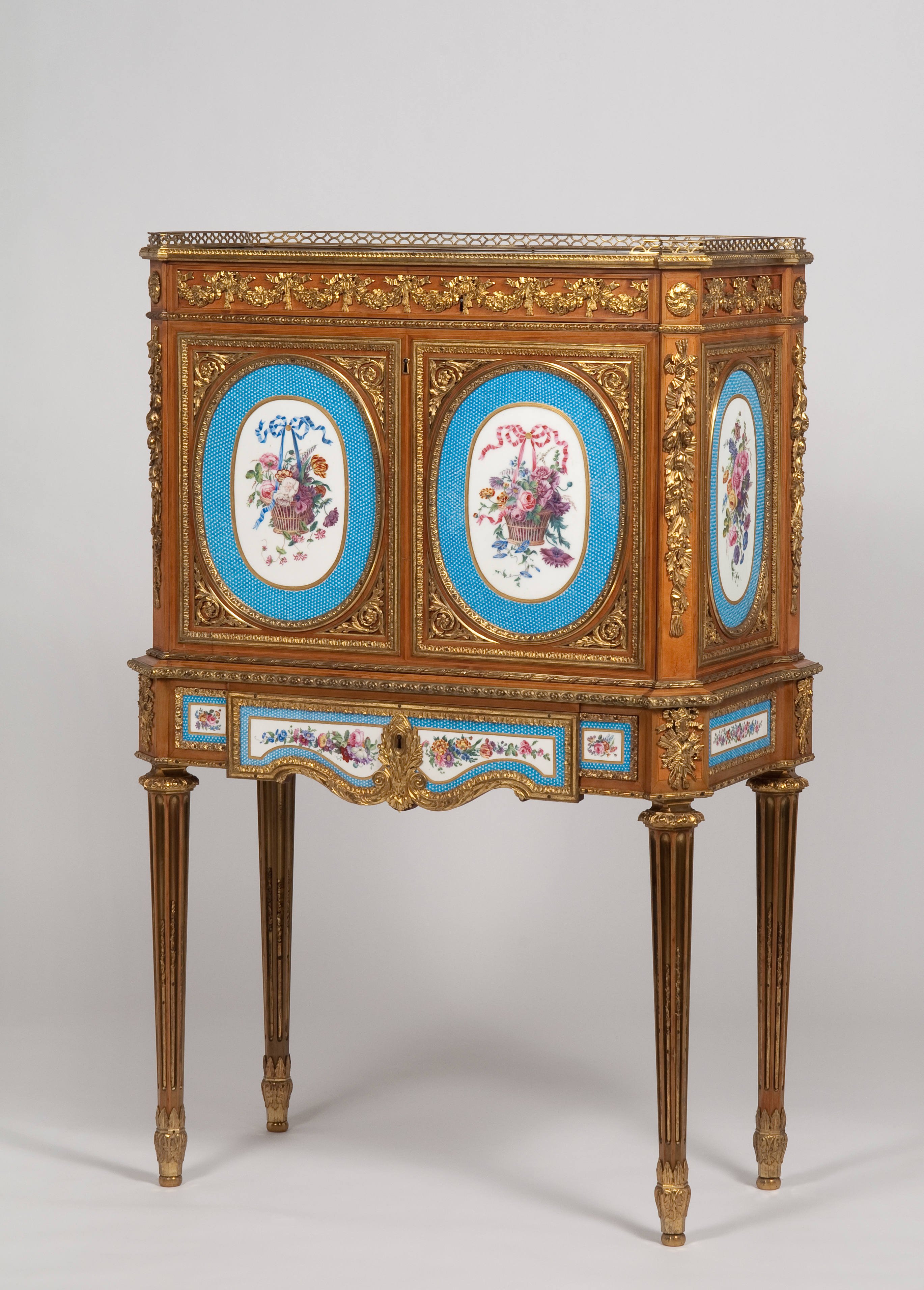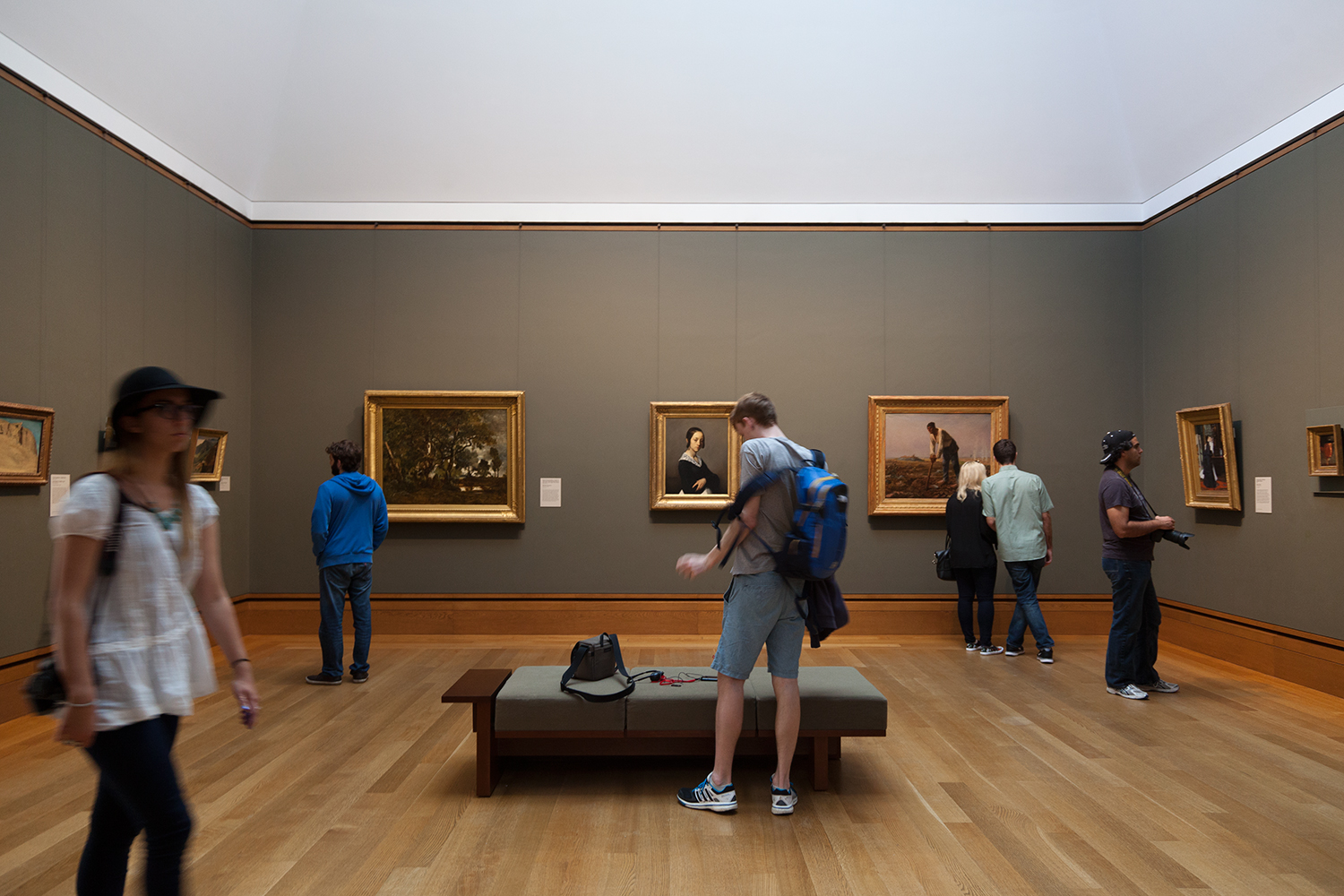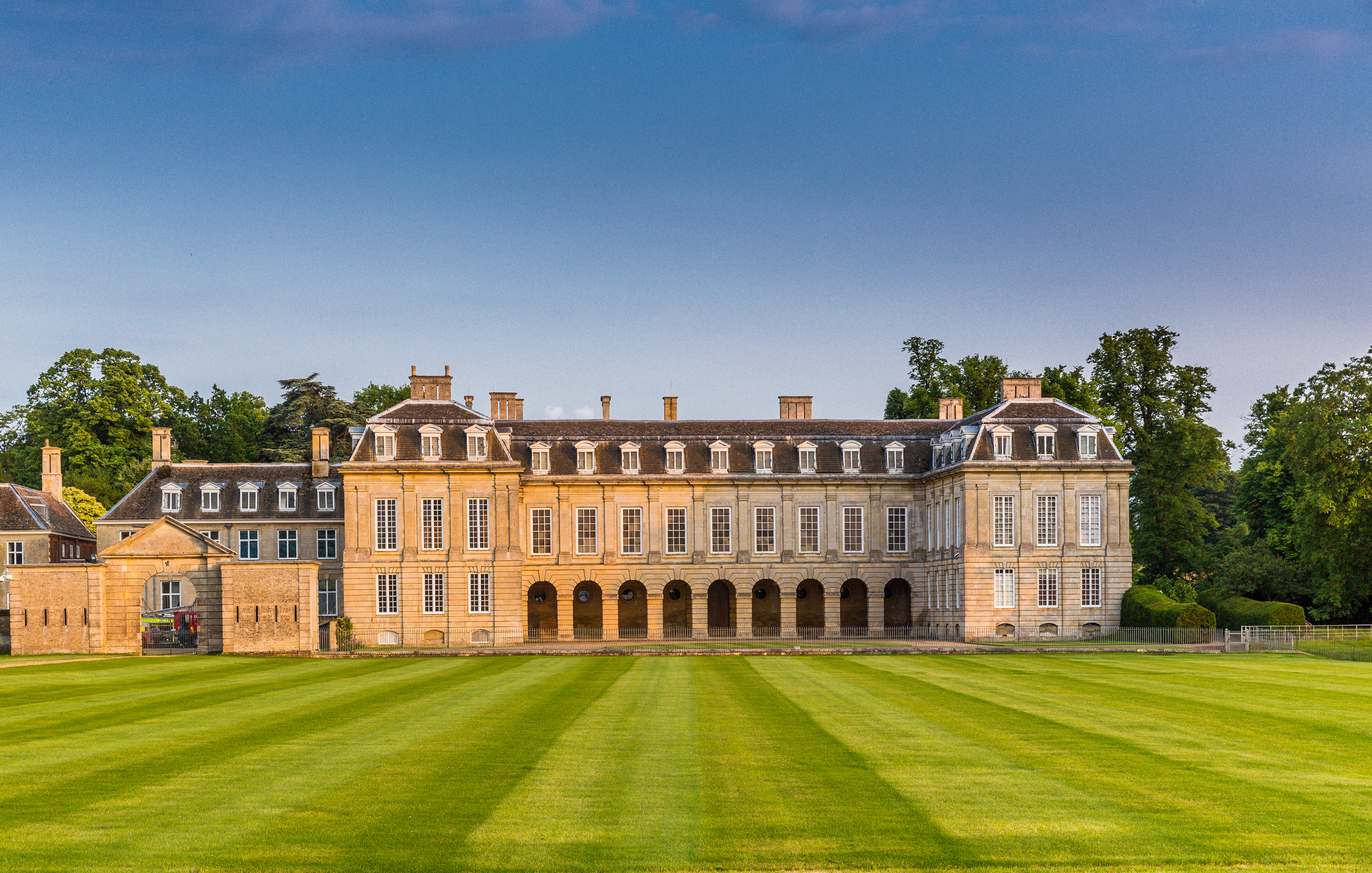|
Martin Carlin
Martin Carlin (c. 1730–1785) was a Parisian ''ébéniste'' ( cabinet-maker), born at Freiburg, who was received as Master ''Ébéniste'' at Paris on 30 July 1766. Renowned for his "graceful furniture mounted with Sèvres porcelain", Carlin fed into the luxury market of eighteenth-century decorative arts, where porcelain-fitted furniture was considered among "the most exquisite furnishings" within the transitional and neoclassical styles. Carlin's furniture was popular amongst the main great dealers, including Poirier, Daguerre, and Darnault, who sold his furniture to Marie Antoinette and many amongst the social elite class. He died on 6 March 1785. Work life Carlin worked at first in the shop of Jean-François Oeben, whose sister he married. The marriage contract reveals that "Carlin was still a day-worker living on the quai des Célestins". Yet soon after Oeben's death, Carlin started to sell furniture to the marchands-merciers when setting up independently in the Faubourg Sai ... [...More Info...] [...Related Items...] OR: [Wikipedia] [Google] [Baidu] |
Table Ecriture Carlin 00 082006
Table may refer to: * Table (furniture), a piece of furniture with a flat surface and one or more legs * Table (landform), a flat area of land * Table (information), a data arrangement with rows and columns * Table (database), how the table data arrangement is used within databases * Calligra Tables, a spreadsheet application * Mathematical table * Table (parliamentary procedure) * Tables (board game) * Table, surface of the sound board (music) of a string instrument * '' Al-Ma'ida'', the fifth ''surah'' of the Qur'an, usually translated as “The Table” * Water table See also * Spreadsheet, a computer application * Table cut, a type of diamond cut * The Table (other) * Table Mountain (other) * Table Rock (other) * Tabler (other) * Tablet (other) Tablet may refer to: Medicine * Tablet (pharmacy), a mixture of pharmacological substances pressed into a small cake or bar, colloquially called a "pill" Computing * Tablet compute ... [...More Info...] [...Related Items...] OR: [Wikipedia] [Google] [Baidu] |
Neoclassicism
Neoclassicism (also spelled Neo-classicism) was a Western cultural movement in the decorative and visual arts, literature, theatre, music, and architecture that drew inspiration from the art and culture of classical antiquity. Neoclassicism was born in Rome largely thanks to the writings of Johann Joachim Winckelmann, at the time of the rediscovery of Pompeii and Herculaneum, but its popularity spread all over Europe as a generation of European art students finished their Grand Tour and returned from Italy to their home countries with newly rediscovered Greco-Roman ideals. The main Neoclassical movement coincided with the 18th-century Age of Enlightenment, and continued into the early 19th century, laterally competing with Romanticism. In architecture, the style continued throughout the 19th, 20th and up to the 21st century. European Neoclassicism in the visual arts began c. 1760 in opposition to the then-dominant Rococo style. Rococo architecture emphasizes grace, ornam ... [...More Info...] [...Related Items...] OR: [Wikipedia] [Google] [Baidu] |
Waddesdon Manor
Waddesdon Manor is a English country house, country house in the village of Waddesdon, in Buckinghamshire, England. Owned by National Trust for Places of Historic Interest or Natural Beauty, National Trust and managed by the Rothschild Foundation, it is one of the National Trust's most visited properties, with over 463,000 visitors in 2019. The Grade I listed house was built in a mostly Neo-Renaissance style, copying individual features of several French châteaux, between 1874 and 1889 for Baron Ferdinand de Rothschild (1839–1898) as a weekend residence for entertaining and to house his collection of arts and antiquities. As the manor and estate have passed through three generations of the Rothschild family, the contents of the house have expanded to become one of the most rare and valuable collections in the world. In 1957, James de Rothschild (politician), James de Rothschild bequeathed the house and its contents to the National Trust, opening the house and gardens for the be ... [...More Info...] [...Related Items...] OR: [Wikipedia] [Google] [Baidu] |
Wallace Collection
The Wallace Collection is a museum in London occupying Hertford House in Manchester Square, the former townhouse of the Seymour family, Marquesses of Hertford. It is named after Sir Richard Wallace, who built the extensive collection, along with the Marquesses of Hertford, in the 18th and 19th centuries. The collection features fine and decorative arts from the 15th to the 19th centuries with important holdings of French 18th-century paintings, furniture, arms and armour, porcelain and Old Master paintings arranged into 25 galleries. It is open to the public and entry is free. It was established in 1897 from the private collection mainly created by Richard Seymour-Conway, 4th Marquess of Hertford (1800–1870), who left both it and the house to his illegitimate son Sir Richard Wallace (1818–1890), whose widow Julie Amelie Charlotte Castelnau bequeathed the entire collection to the nation. The collection opened to permanent public view in 1900 in Hertford House, and rem ... [...More Info...] [...Related Items...] OR: [Wikipedia] [Google] [Baidu] |
The Detroit Institute Of Arts
The Detroit Institute of Arts (DIA), located in Midtown Detroit, Michigan, has one of the largest and most significant art collections in the United States. With over 100 galleries, it covers with a major renovation and expansion project completed in 2007 that added . The DIA collection is regarded as among the top six museums in the United States with an encyclopedic collection which spans the globe from ancient Egyptian and European works to contemporary art. Its art collection is valued in billions of dollars, up to $8.1 billion USD according to a 2014 appraisal. The DIA campus is located in Detroit's Cultural Center Historic District, about north of the downtown area, across from the Detroit Public Library near Wayne State University. The museum building is highly regarded by architects. The original building, designed by Paul Philippe Cret, is flanked by north and south wings with the white marble as the main exterior material for the entire structure. The campus is par ... [...More Info...] [...Related Items...] OR: [Wikipedia] [Google] [Baidu] |
Château De Versailles
The Palace of Versailles ( ; french: Château de Versailles ) is a former royal residence built by King Louis XIV located in Versailles, about west of Paris, France. The palace is owned by the French Republic and since 1995 has been managed, under the direction of the French Ministry of Culture, by the Public Establishment of the Palace, Museum and National Estate of Versailles. Some 15,000,000 people visit the palace, park, or gardens of Versailles every year, making it one of the most popular tourist attractions in the world. Louis XIII built a simple hunting lodge on the site of the Palace of Versailles in 1623 and replaced it with a small château in 1631–34. Louis XIV expanded the château into a palace in several phases from 1661 to 1715. It was a favorite residence for both kings, and in 1682, Louis XIV moved the seat of his court and government to Versailles, making the palace the '' de facto'' capital of France. This state of affairs was continued by Kings Louis ... [...More Info...] [...Related Items...] OR: [Wikipedia] [Google] [Baidu] |
Royal Collection
The Royal Collection of the British royal family is the largest private art collection in the world. Spread among 13 occupied and historic royal residences in the United Kingdom, the collection is owned by King Charles III and overseen by the Royal Collection Trust. The British monarch owns some of the collection in right of the Crown and some as a private individual. It is made up of over one million objects, including 7,000 paintings, over 150,000 works on paper, this including 30,000 watercolours and drawings, and about 450,000 photographs, as well as around 700,000 works of art, including tapestries, furniture, ceramics, textiles, carriages, weapons, armour, jewellery, clocks, musical instruments, tableware, plants, manuscripts, books, and sculptures. Some of the buildings which house the collection, such as Hampton Court Palace, are open to the public and not lived in by the Royal Family, whilst others, such as Windsor Castle and Kensington Palace, are both residences and ... [...More Info...] [...Related Items...] OR: [Wikipedia] [Google] [Baidu] |
Getty Museum
The J. Paul Getty Museum, commonly referred to as the Getty, is an art museum in Los Angeles, California housed on two campuses: the Getty Center and Getty Villa. The Getty Center is located in the Brentwood neighborhood of Los Angeles and features pre-20th-century European paintings, drawings, illuminated manuscripts, sculpture, decorative arts, and photographs from the inception of photography through present day from all over the world. The original Getty museum, the Getty Villa, is located in the Pacific Palisades neighborhood of Los Angeles and displays art from Ancient Greece, Rome, and Etruria. History In 1974, J. Paul Getty opened a museum in a re-creation of the Villa of the Papyri at Herculaneum on his property in Malibu, California. In 1982, the museum became the richest in the world when it inherited US$1.2 billion. In 1983, after an economic downturn in what was then West Germany, the Getty Museum acquired 144 illuminated medieval manuscripts from the ... [...More Info...] [...Related Items...] OR: [Wikipedia] [Google] [Baidu] |
The Huntington Library
The Huntington Library, Art Museum and Botanical Gardens, known as The Huntington, is a collections-based educational and research institution established by Henry E. Huntington (1850–1927) and Arabella Huntington (c.1851–1924) in San Marino, California, United States. In addition to the library, the institution houses an extensive art collection with a focus on 18th- and 19th-century European art and 17th- to mid-20th-century American art. The property also includes approximately of specialized botanical landscaped gardens, most notably the "Japanese Garden", the "Desert Garden", and the "Chinese Garden" (Liu Fang Yuan). History As a landowner, Henry Edwards Huntington (1850–1927) played a major role in the growth of Southern California. Huntington was born in 1850, in Oneonta, New York, and was the nephew and heir of Collis P. Huntington (1821–1900), one of the famous "Big Four" railroad tycoons of 19th century California history. In 1892, Huntington relocat ... [...More Info...] [...Related Items...] OR: [Wikipedia] [Google] [Baidu] |
The Metropolitan Museum Of Art
The Metropolitan Museum of Art of New York City, colloquially "the Met", is the largest art museum in the Americas. Its permanent collection contains over two million works, divided among 17 curatorial departments. The main building at 1000 Fifth Avenue, along the Museum Mile on the eastern edge of Central Park on Manhattan's Upper East Side, is by area one of the world's largest art museums. The first portion of the approximately building was built in 1880. A much smaller second location, The Cloisters at Fort Tryon Park in Upper Manhattan, contains an extensive collection of art, architecture, and artifacts from medieval Europe. The Metropolitan Museum of Art was founded in 1870 with its mission to bring art and art education to the American people. The museum's permanent collection consists of works of art from classical antiquity and ancient Egypt, paintings, and sculptures from nearly all the European masters, and an extensive collection of American and mod ... [...More Info...] [...Related Items...] OR: [Wikipedia] [Google] [Baidu] |
Boughton House
Boughton House is a country house in the parish of Weekley in Northamptonshire, England, situated about north-east of Kettering. It is situated within an estate of . The present house was built by Ralph Montagu, 1st Duke of Montagu (d.1709), immediately after 1683 when he inherited the estate from his father, whose own grandfather Sir Edward Montagu, Lord Chief Justice, had bought it in 1528. The 1st Duke had served as the Ambassador to France during the 1670s and was much influenced by contemporary French architecture and garden design, especially by the Palace of Versailles, which style he reproduced at Boughton. It is now one of the seats of the builder's descendant Richard Montagu Douglas Scott, 10th Duke of Buccleuch and is famed for its beauty, its collections, and for having survived virtually unchanged since the 17th century. While possessing a medieval core, its exterior evokes a 17th century French chateau, causing it to be termed ''The English Versailles'' (a mon ... [...More Info...] [...Related Items...] OR: [Wikipedia] [Google] [Baidu] |





.png)


